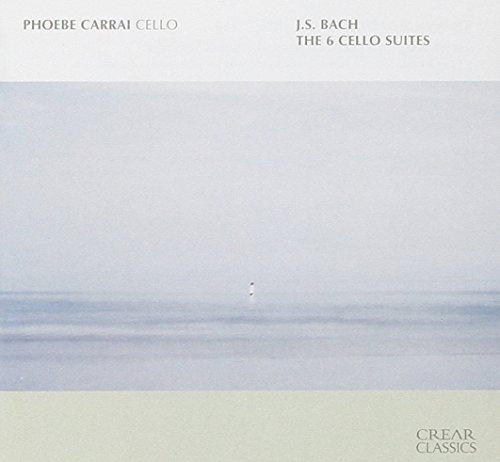
Phoebe Carrai. Bach Cello Suites. CREAR Classics Avie AV0021 Released 2003
Recorded in Aug 2002 and April 2003 at CREAR Scotland.
Instruments used are Italian anon. circa 1690 and for 6thSuite 5 string Cello “Marquis L’Air d’oiseau” 1775.
The Cellist.
Pheobe Carrai is an American cellist who has spent much time studying and working with such Baroque luminaries as Nikolaus Harnoncourt in Europe. This recording is a historically informed performance (HIP) although no details of strings and bow used is given. It would be fair to say that Carrai is not well known outside specialist Baroque circles and in fact the presence of this recording evaded my researches to catalogue all recordings of the Suites for the last 18 months! I found it on Amazon and at a low price pre-owned so thought I would take a chance and obtain it.
The Recording.
First impressions are favourable with a rich sonorous tone. The cello is well placed in the sound stage and without excessive echo, but with a lively acoustic. I was impressed by much of the phrase shaping. In addition, the way in which key notes came out to emphasise the chord progressions and the polyphonic nature of this music.
In general the Preludes were a little slower than most performances and the Sarabandes a little quicker. The Courantes and Gigues were rhythmic and certainly not rushed. However, I did feel that the sixth Suite Gigue was a little staid and underwhelming.
Reservations.
My biggest reservation about this recording is that I could find little sense of direction, overall shape and pulse. There was definitely shape in the components of each piece but it did not seem to gel and come together in any sense that I could appreciate. This may of course be a problem in my musical appreciation but having listened to a fair few performances now, I do feel it significant. I can best describe this as comparing each movement of the Suites to a picture. Carrai’s performance is like looking at a very detailed collection of small images framed together like cigarette cards.
My ideal, would be a single image not necessarily clear and focussed, but definitely conveying meaning or emotion. Significant changes in pace contributed to this effect in a number of the slower movements.
Accompanying notes.
The accompanying leaflet notes by John Lutterman are very helpful explaining much of the polyphonic nature and the Cosmopolitan background of the Suites in straight forward non embellished language. A welcome relief from many supplied with other recordings!
Conclusion.
So, not strongly recommended but certainly worth experimenting with as available at a low price.
Charles.